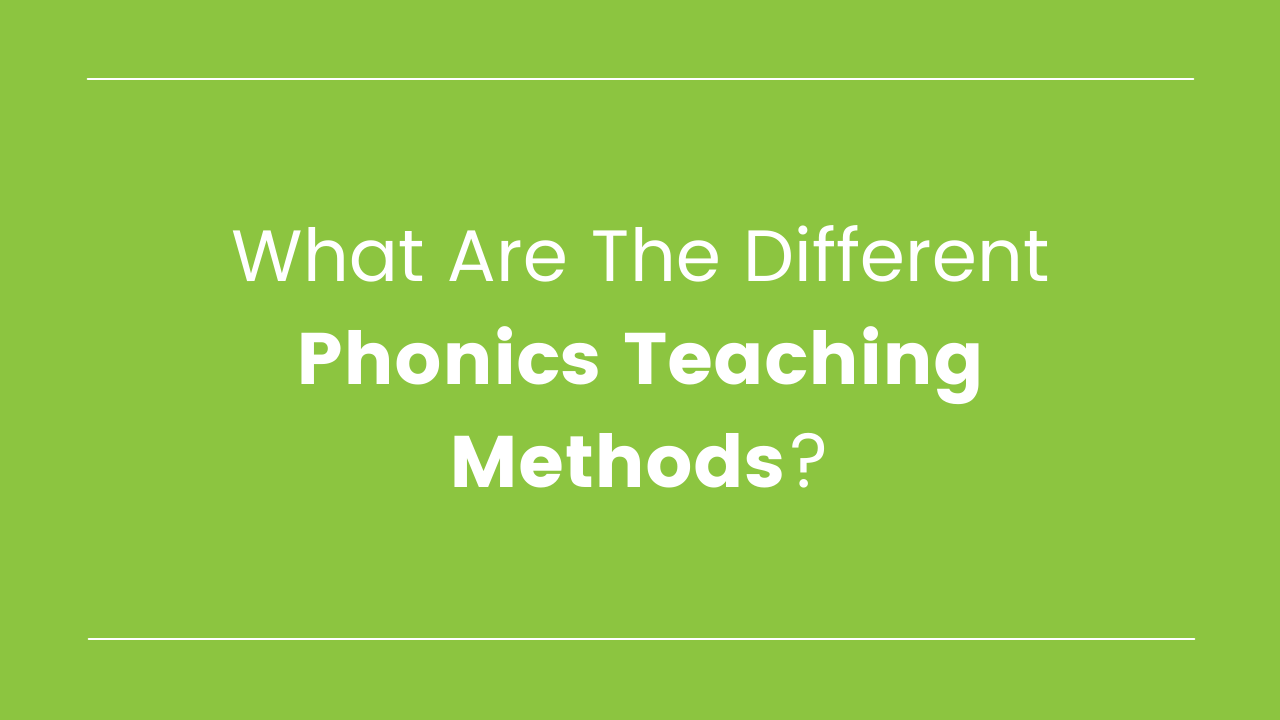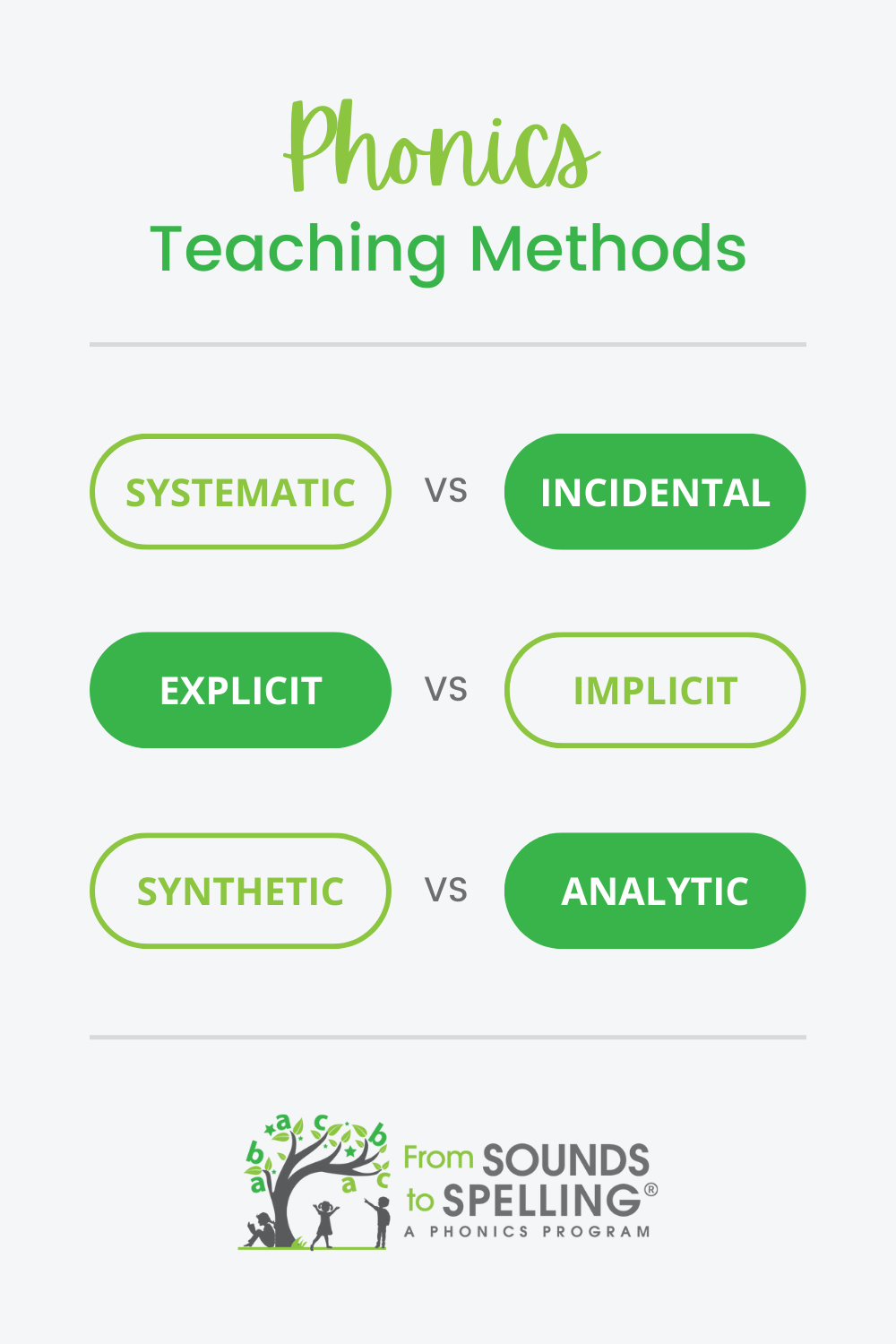
What Are The Different Phonics Teaching Methods?
The research is clear: phonics instruction is crucial to students' reading success! However, there are several different ways to teach phonics (phonics teaching methods). In this post, we'll explore some of the principal phonics teaching methods, as well as which one(s) are most effective.
Systematic vs. Incidental Phonics Teaching Methods
The research is clear that systematic phonics instruction has the greatest impact on student learning.
In the systematic phonics instruction method, individual phonics skills (like short vowels or consonant blends) are laid out in a sequence. Teachers cover each skill in that sequence (ideally, moving on to the next skill only after students have mastered the current skill).
The incidental phonics teaching method stands in contrast to systematic phonics instruction. In incidental instruction, the teacher covers phonics skills as they appear in text. For example, if she is reading students a poem that has many examples of the -at rime, she might cover that word family.
Incidental phonics instruction can support systematic instruction, but it should not be your primary method of instruction. You'll want to follow a scope and sequence of phonics skills. Then, if other phonics patterns arise in a text, you can discuss them with students if you feel it will truly enhance student learning and help them successfully read a text. But your primary means of phonics instruction should take place via the systematic approach.
When looking at phonics programs to select one, you'll definitely want to choose a program that uses systematic instruction, like From Sounds to Spelling.
Explicit vs. Implicit Phonics Teaching Methods
Explicit phonics instruction involves teaching students letters / letter combinations and the sounds they represent.
Here's an example: A teacher explains the "ch" digraph, saying that the two letters are working together to create a new sound, /ch/. Then, the teacher helps students blend to read words with "ch."
Implicit instruction, on the other hand, puts more responsibility on the students to figure out how letters / letter combinations and sounds work. Students are expected to draw conclusions about phonics patterns simply from reading (or seeing the teacher read) whole words. In the implicit phonics teaching method, there are no teacher explanations like the "ch" digraph example above.
Explicit phonics instruction has been shown by research to be more effective than implicit phonics instruction.
Synthetic vs. Analytic Phonics Teaching Methods
In the synthetic phonics teaching method, students produce the sounds for individual letters / letter combinations in a word, and then blend the sounds together to read the words.
Example: Students would read the word "leash" by saying the sounds /l/ /e/ (long e), /sh/, leash.
In the analytic phonics teaching method, students first learn an entire word, and then the teacher helps them make connections between the letters and letter combinations to the sounds they produce.
Example: The teacher would read students the word "leash." Then, she would guide students in connecting the sounds in the word (/l/ /e/ /sh/) to the letters (l, ea, sh).
At the time of writing, research findings are not as strong on the synthetic vs. analytic phonics teaching method debate as they are for explicit, systematic instruction - but they generally favor synthetic instruction.
Other Phonics Teaching Methods
Here are a few other phonics teaching methods that are helpful to know:
- Phonics through spelling - In this method, students learn to spell words by 1) breaking up words into their phonemes (individual sounds), and 2) writing letters and letter combinations to represent those phonemes. Whole word memorization is not the focus in phonics through spelling.
- Embedded phonics - This is an implicit phonics teaching method. Students learn about words and how phonics patterns work while they are reading real texts. Just like with implicit phonics instruction, this approach can complement a systematic, explicit phonics approach but does not replace explicit phonics instruction.
- Analogy phonics - This phonics teaching method focuses on word families and is sometimes referred to as onset-rime phonics instruction. In this approach, students are encouraged to apply their knowledge of words to read and write similar words. For example, if students know the word "like," they are encouraged to use their knowledge of the word family "ike" to read the words "bike" and "spike."
Conclusion
We want to provide students with explicit, systematic, and largely synthetic phonics instruction.
Teaching phonics through spelling, using some limited embedded phonics instruction, and using some limited analogy phonics instruction can complement explicit, systematic, and synthetic phonics instruction.
To read more about what all phonics programs should include in addition to systematic, explicit, synthetic phonics instruction, check out this article.





